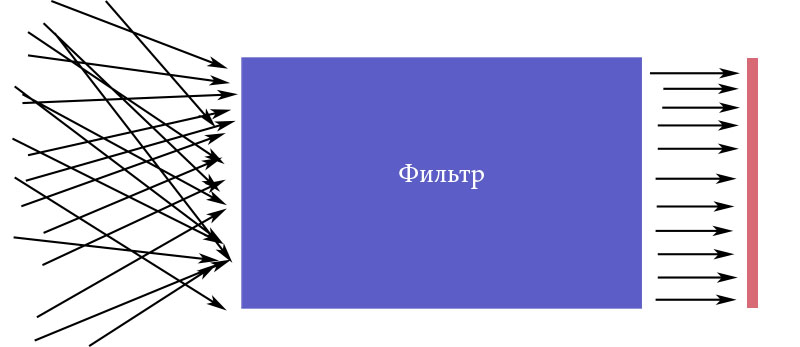Answer the question
In order to leave comments, you need to log in
Is there a device that allows you to look at the world in a parallel, rather than a perspective projection?
In various 3d engines, getting an orthographic projection image is easy, but in the real world, this is most likely not easy to do.
I'm wondering if it's possible to see the world not in a perspective, but in an orthographic projection, and if there are devices that allow you to do this.
I imagined the approximate principle of operation of this device as follows: 
There is a photosensitive matrix of size, say, 1x1 meter, in front of it there is a ray filter. It transmits only rays parallel to the direction of view. The filter can be very long honeycombs, such: 
They pass parallel and close to them beams, and absorb all oblique ones. Or it can be an anisotropic crystal, which will also transmit rays in one direction, and extinguish them in all others.
The luminosity of the rays passing through the filter will, of course, be very weak, incl. the matrix must be very sensitive. Well, to remove such a device will only be an area measuring 1x1 meter.
Question 1: Are there such devices in the world that solve the problem described in the subject of the question?
Question 2: How true is my assumption about their device?
Answer the question
In order to leave comments, you need to log in
Take an ordinary telephoto lens with a long focal length, move away and what you see through it is very, very close to parallel projection.
It's hard to do something like this. It’s easier and cheaper to put a lidar, a camera, get a 3D model at the output (you can even in raw voxel form, without restoring surfaces and simplifying it), reproject.
For static objects, another technique is possible: scanning. There are, for example, x-ray scanners for cargo containers. You can scan in the same way in the visible range.
Didn't find what you were looking for?
Ask your questionAsk a Question
731 491 924 answers to any question